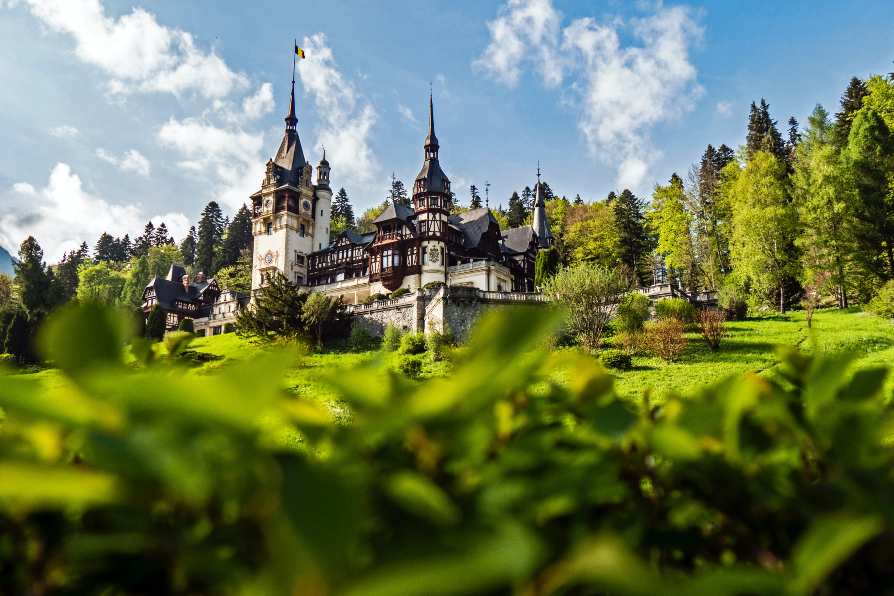Last update: December 3rd, 2021.
The deadliest wave of COVID has just passed through Romania, the EU’s second least vaccinated country, and officials have tightened restrictions to try and delay another wave.
Romania has a vaccination rate of less than 40% despite using the EU Digital COVID Certificate since July to try and boost uptake.
Hundreds of people are dying per day, and official numbers show that more than 90% of the deceased were not vaccinated.
COVID-19 restrictions in Romania
As Romania found itself in the throes of a deadly COVID wave, doctors pleaded with officials to tighten restrictions and for NATO to assist the crippled healthcare system.
Since late October, the Romanian COVID passport has become mandatory for most day-to-day operations with only essential services being open to unvaccinated.
Gyms, cinemas, and shopping malls are all restricted and a 10 pm curfew is in place for everyone, regardless of their vaccination status or validity of their Romanian travel pass.
Issues with vaccine hesitancy in Romania
Vaccine hesitancy has been a contributing factor to the deadly new wave of COVID-19 in Romania. Dr. Octavian Jurma told Associated Press that there is very little education on the matter.
“There was no (government) communication strategy whatsoever, and no education strategy. The only people communicating, and very effectively, are the anti-vaxxers and the negationist movements,” he said. “The truth is that this pandemic wave was left to peak completely unmitigated — and the whole burden was put on the hospitals.”
Romania’s vaccination rate is almost half the EU average: just over 7 million of the country’s 19 million population has been vaccinated.
The implementation of Romania’s COVID pass has only resulted in a slight increase in vaccine uptake but not enough to send the country over the 40% mark.
Travel regulations in Romania: can I travel to Romania with my local COVID certificate?
Romania continues to implement a traffic light system that is separate from the one advised by the European Center for Disease Prevention.
Green list countries are considered “safe” and travelers from these territories do not have to undergo testing, quarantine, or isolation measures.
Countries currently on the green list are:
Yellow countries are considered medium-risk. People traveling to Romania from yellow list countries will need to provide negative test results. If test results are not provided a mandatory quarantine period of 10 days will be in effect.
Countries currently on the yellow list are:
- Albania
- Andorra
- Aruba
- Azerbaijan
- Bosnia and Herzegovina
- Cyprus
- Germany
- Iran
- Greenland
- Liechtenstein
- Jordan
- Malaysia
- Northern Macedonia
- Norway
- Poland
- San Marino
- Saint Lucia
- Thailand
- Switzerland
- Trinidad & Tobago
- United States of America
The red list poses the highest threat and these countries have recorded an infection rate higher than 3 people per 1000 citizens in the last 2 weeks.
Countries currently on the red list are:
- Bangladesh
- Myanmar
- Bhutan
- Maldives
- Sri Lanka
- South Africa
- Tanzania
- Botswana
- Seychelles
- Zambia
- Namibia
- Oman
- Tajikistan
- Turkmenistan
- Kyrgyzstan
- Chile
- Mongolia
- Uruguay
- Paraguay
- Brazil
- Bolivia
- Suriname
- Costa Rica
- Panama
- Guatemala
- El Salvador
- Cuba
- Belize
- Dominican Republic
- Saint Lucia
- Fiji
- Saint Kitts and Nevis
- Grenada
- Singapore
- Brunei
- Barbados
- United Kingdom
- Georgia
- Montenegro
- Armenia
- Serbia
- Latvia
- Lithuania
- Estonia
- Slovenia
- Croatia
- Slovakia
- Ukraine
- Moldova
Romania is part of the EU Digital COVID Certificate program and is accepting all EU-compatible COVID certificates as proof of vaccination, recovery, or negative testing.
Only unvaccinated travelers must abide by the quarantine rules.
Romania accepts all the vaccines approved by the European Medicines Agency as well as Covishield from India.
Current COVID situation in Romania
Romania experienced its largest spike in cases from September to December and recorded nearly 60% more cases than during the previous waves.
A peak was hit on October 19th with 18,863 new cases in one day but the infection rate has since reduced to around 1,200 new cases per day by December 2nd.
In total, more than 1.7 million people have been infected and close to 57,000 people have died.
